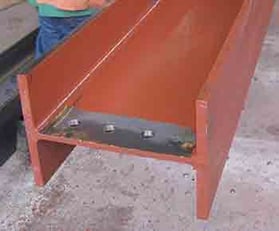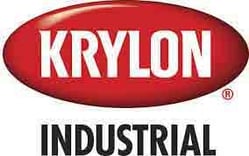VOC Trends Continue to move levels lower
Note : For Steel Fabricators and Construction Firms new to the subject, VOC is the acronym for Volatile Organic Compounds. In short these are the solvents that evaporate out of a coating as it is drying. Many of these vapors have the potential to be harmful to the environment as well as contributing to health hazards.
 As environmental and health concerns are addressed, shop coat steel primers and rust inhibitive coatings are adjusted to meet new VOC regulations. To Steel Fabricators applying a primer coat there is usually one basic purpose. Keep the steel rust free until the structure is enclosed. This sets in conflict the paint’s performance vs. the environmental impact. As the stronger solvents are minimized or replaced the longevity of the coating can be compromised. Through continuous and diligent chemical engineering paint manufacturer’s have managed to produce paints that are durable and comply with some of the lower VOC limits.
As environmental and health concerns are addressed, shop coat steel primers and rust inhibitive coatings are adjusted to meet new VOC regulations. To Steel Fabricators applying a primer coat there is usually one basic purpose. Keep the steel rust free until the structure is enclosed. This sets in conflict the paint’s performance vs. the environmental impact. As the stronger solvents are minimized or replaced the longevity of the coating can be compromised. Through continuous and diligent chemical engineering paint manufacturer’s have managed to produce paints that are durable and comply with some of the lower VOC limits.
The primary VOC limit that covers all of the United States is set by the EPA. They have designated steel primer as an Industrial Maintenance Coating. The current Federal VOC limit for this category is 450 gm /liter. While no state can set their limit higher, they are free to set it lower.
The guidelines for lowering the limits are set by the Ozone Transport Commission, or OTC. While they have no authority to enforce their limits, the OTC publishes its guidelines and the states are free to enact them or create their own.
At the outset OTC recommended a VOC limit for Industrial Maintenance Coatings of 340 gms/liter. Beginning January 1, 2014 they revised it down to 250 gms/liter. Until each state approves the new limit it remains a recommendation.
Currently 19 states have legislated to enact the 2014 lower VOC limits. Each year additional states join the standards or enact new, lower ones. Some recent changes are:
- Michigan – January 1, 2023 lowered the limit for Industrial Maintenance Coatings from 340 to 250 gms/liter
- New York – January 1, 2022 lowered the limit for Industrial Maintenance Coatings from 340 to 250 gms/liter
- Ohio – January 1, 2023 lowered the limit from 340 to 250 gms /liter
The VOC reductions from the federal limit of 450 gms/liter to the OTC recommended 340 gms/liter were met with adjustments to the formulas while still using oil based coatings. Thus far, as the limit is reduced to 250 gms/liter, formulas have had to incorporate vegetable oil to replace the alcohols and acids they are removing. The other alternative is water based / acrylic coatings. Both alternatives present challenges to the steel fabricator in terms of application and durability.
This process of refining the formulas then lowering the VOC limits will most likely continue. As mentioned above, the object is to prevent the steel from rusting during the construction cycle and the new, lower VOC coatings may compromise this goal. If so, the best practice the fabricator can employ to maximize the serviceable life is to apply diligent surface preparation practices. This gives the coating the best ability to adhere to the steel substrate and will prolong the service life.
mentioned above, the object is to prevent the steel from rusting during the construction cycle and the new, lower VOC coatings may compromise this goal. If so, the best practice the fabricator can employ to maximize the serviceable life is to apply diligent surface preparation practices. This gives the coating the best ability to adhere to the steel substrate and will prolong the service life.
The Steel Supply Company, through Sherwin-Williams nationwide network of shipping points can provide steel coatings to fabricators throughout the United States. Sherwin maintains a detailed chart showing each state and which steel coatings are permissible. For a copy, call, email, or request one via our website.




